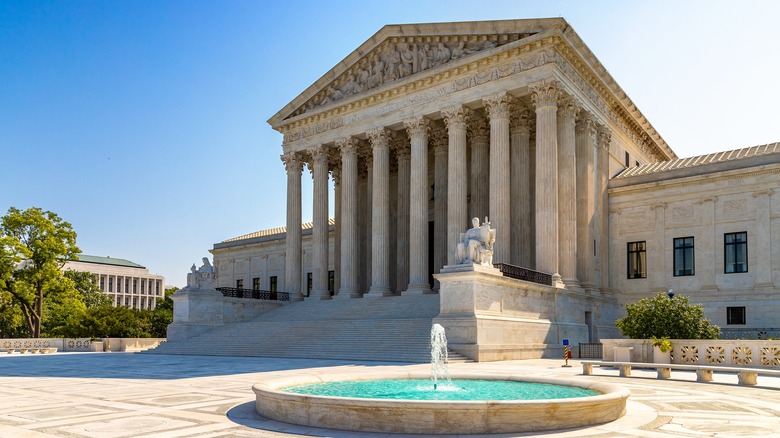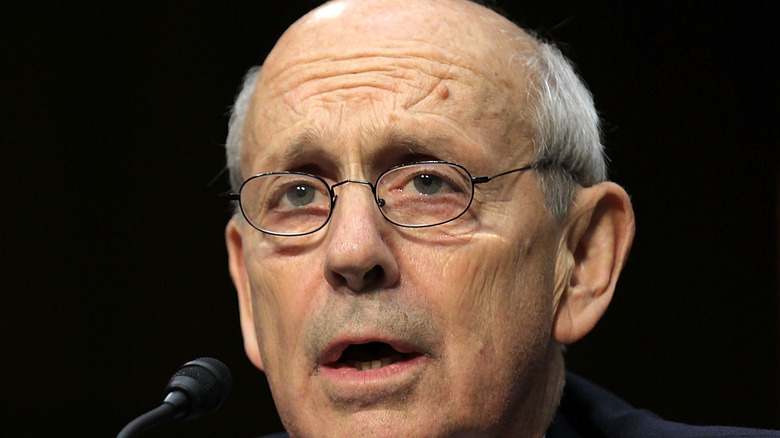Why There Are No Term Limits For Supreme Court Justices
The Supreme Court has been an established part of the United States judiciary since 1789 (per History). When it was first formed, only six justices sat on the Court. They took the job with the intention of serving until they retired or died. Not every Supreme Court Justice serves for a long time — most serve about 16 years on the bench on average (via The Supreme Court). But others have kept the prized role for decades, like Associate Justice William O. Douglas, who dedicated over 36 years to the position.
The oldest person to ever serve was Justice Oliver Wendell Holmes, Jr.. He remained on the Court for three decades, and didn't retire until he turned 90 years old. The oldest sitting member of today's Court is Justice Stephen G. Breyer — the 83-year-old justice was born in 1938 (via The Supreme Court).
With justices serving longer terms than they ever have before, via Fix The Court, why aren't there term limits for Supreme Court justices serving on the highest court in America?
Serving on the Supreme Court for a lifetime
Justices of The Supreme Court are appointed by the President of the United States, and their nomination has to then be approved by the Senate. Then, they have the job for life, if they so choose.
The only reason a justice might lose their job is due to bad behavior – The Constitution of the United States specifies that justices must be in "good behavior" to keep the role. That protects the judges from losing their jobs for political reasons (via News at Northeastern University). The justice doesn't have to worry about making popular decisions, and they can remain unswayed by the president or any other politician.
There is a lot to consider if term limits were to be imposed. Term limits would need to be applied carefully to avoid political issues — it wouldn't be very fair if one president got to choose lots of justices at once, just because their terms had expired. The term limits could be staggered to avoid this.
As Supreme Court scholars say, the most important thing is ensuring the justices won't be swayed by politics while they make some of the most important decisions in American law.
Life expectancy has doubled
Per the Center for American Progress, people just didn't have very long lifespans back in the 1700s when the Supreme Court was founded, so the turnover of judges was higher. Even by the late 1800s, living to old age meant hitting 39 years old — many people didn't live as long as people do today, per Statista.
Lifespans have steadily increased with advances in modern medicine, meaning that today, the average life expectancy for someone is around 78 years old. That's almost double the expected lifespan of the founding Supreme Court members. So basically, the founders of the Court weren't considering the possibility that someone might serve on the Court for two or three decades — it's a modern-day issue that the Court has yet to change (per the Center for American Progress.)
However, the justices do consider the issue. Chief Justice John Roberts suggested that a 15-year term limit would be reasonable, and would prevent the justices from settling into a cushy role and becoming out of touch with regular folks. He added that a higher Court turnover would be a welcome change, too.
With a sky-high life expectancy for today's American citizen, the Court has also garnered suggestions on term limits from advocacy organizations like "Fix The Court," which proposes an 18-year cap on the justices' terms.


